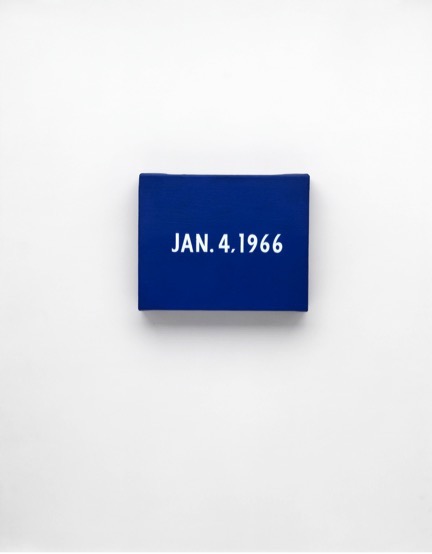On Kawara—Silence, organized by Guggenheim Senior Curator Jeffrey Weiss with Assistant Curator and IFA PhD Candidate Anne Wheeler (on view February 6 through May 3, 2015), bears the distinct imprint of the artist’s own logic. This is not unexpected given Kawara’s role in determining the exhibition’s structure. Still, following the artist’s death this past summer, viewing Kawara’s work on his own terms is deeply gratifying. Early in the planning process the artist proposed a number of “chapters” or sections that would inform the composition of On Kawara—Silence. Collectively, these chapters include all of Kawara’s artistic production since 1963: notebook sketches known as the Paris—New York Drawings, paintings from the artist’s first years in New York, Code drawings, One Million Years, One Hundred Years Calendars, Pure Consciousness, Journals, as well as the Today, I Got Up, I Went, I Met, and I Am Still Alive series. In the eponymous exhibition catalogue, Weiss explains the genesis of the show’s unique organization: “In choosing these groups of artworks, On Kawara was generously responding to a curatorial proposition: to attempt to represent his practice as a practice rather than assemble a more exclusive selection of individual objects.”[1] In the Guggenheim’s exhibition, hallmarks of Kawara’s practice—repetition and duration—are easily distinguishable, while other connections in and amongst various bodies of work also come to the surface.

From 1966 until his death in June 2014, Kawara assiduously monitored and recorded his own passage through time and space in serial bodies of work, each of which was developed over the course of a number of years. Collectively, Kawara’s work accounts for time in various units: minutes, hours, days, years, centuries, and millennia. The legibility of Kawara’s chronicling activity is reliant upon the repetition of certain activities (mailing, listing, telegramming, painting) according to the self-imposed restrictions and conditions that limited the production of each distinct body of work: a Date Painting had to be completed within the span of twenty-four hours, the maps comprising I Went charted the artist’s movement in a given day, and each page included in One Million Years contained five hundred years typed into a grid formed by rows and columns.

